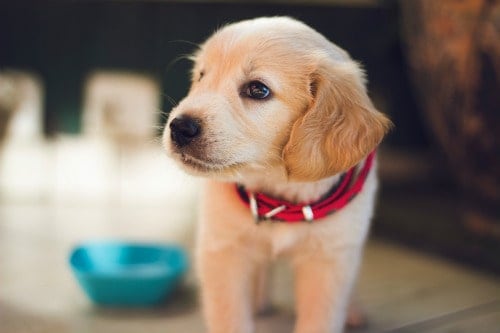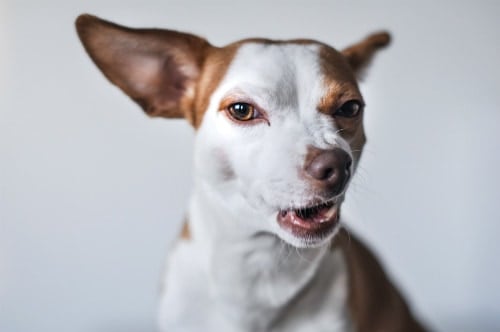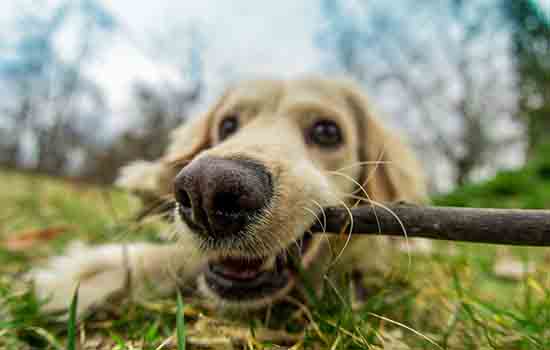How Hard Is It To Potty-Train A Dog?
It’s tough to give a straight answer on this topic. This is because the difficulty of potty-training a dog will depend entirely on you. A skilled owner who gives clear and consistent direction will normally find this process easy.
However, some of it will also depend on the dog. Some dogs are much more stubborn than others. And while most dogs will take to this skill with relative ease, others will require extreme measures. We’ll cover all this and more.
Please note that we are talking about teaching your dog to do their business in the correct place. We’re not talking literally about teaching dogs to use the toilet. While it’s possible to do this, it’s too hard for most people (and most dogs)!
Choose A Method

The first thing to realize is that you have multiple options.
As they say, there is more than one way to skin a cat. In like manner, there’s more than one way to potty-train your dog.
Chances are, you already have a very good idea of where you don’t want your dog to do their poopy business. Since that problem is already dealt with, think instead about where you want them to go.
Potty training methods differ from one trainer to another, but most methods can be classified into one of three categories.
Let’s go through each one.
1. The Leash Method
First, there is the leash method. This one is probably the most common. When you choose this method, your dog isn’t allowed to do their business anywhere in the house. When they need to go, you put them on a leash and take them outside.
Of course, it’s not quite as simple as that. First of all, your dog needs to know how to tell you that it’s time to go outside.
Scratching at the door is a common sign.
Whining and whimpering can also be a signal.
My preferred method is to familiarize a pup with the word “potty” at an early age. The earlier, the better.
When you see the dog doing their business, talk to the dog, and repeat the word “potty” a lot. This is the way to create a word association that you can use later.
If you do this, your dog will respond to the word when asked.
You look at them and say, “potty.” If they don’t respond, they probably don’t need to go; however, if they get excited and start jumping around, it’s a good bet that you need to grab the leash.
2. The Tray Method
Second, there is the tray method. The tray method is well-suited for places where you can’t take your dog outside for one reason or another.
You’ll need a big plastic tray, like the kind that you find at the bottom of a dog cage.
You will also need a lot of newspaper. This is an easy problem to solve.
Go to your local newspaper office and ask if they have any unwanted papers to give away. They will probably give you all that you want and then some! So, go ahead and stock up.
You train your dog to use the tray by forcing them to use it. When you see the dog squatting, pick him up, and put him on the tray.
It may take a few tries before you get it right. When the dog uses the paper, reward him accordingly — with a treat.
3. The Cage Method (for the Stubborn Dog!)
Third, there’s the cage method, which is usually reserved for the more stubborn dogs that don’t want to learn.
In this method, you aim to keep control of your dog at all times. Such isn’t an easy task, but it’s not overly difficult either.
The essence of this method is to keep your dog in a cage (most of the time) until he’s potty trained. However, you must take the dog out every two hours and give them the chance to potty. If not, you’ll get a cage full of poop, and that’s no fun to clean!
A word about this method: it’s for short-term use only.
This won’t be a pleasant experience for your dog, and this is why you shouldn’t use this method any longer than necessary.
I would consider a month to be the absolute longest time for this method. If you haven’t got results within a month, this method probably isn’t going to work anyway.
Sometimes, a dogs’ master must be firm, but you should never be cruel.
It’s also possible to mix methods if you find it practical to do so.
For instance, you might use the leash method, but instead of taking your dogs outside, you might lead them to the tray. Or you might alternate between methods until the dog gets the picture.
What About Adult Dogs?

As we already mentioned, it’s best to potty train a dog while they’re still in puppyhood. However, if you acquired your dog as an adult, this won’t be an option.
That being said, it’s possible to teach an old dog new tricks.
When potty training your adult dog, you need to have a little more patience. This is because your dog will have already established his bathroom habits.
The process is the same, but it will take longer to obtain the results you desire.
If you can’t handle that part, my advice is to buy a puppy.
Training a dog is hard, but un-training a dog can be even harder. When you buy an adult dog, you should be prepared for a little bit of adjustment.
When You Aren’t Home
This is where the rubber meets the road. It’s relatively easy to keep your dogs in line when you are home, but what about the rest of the time? Unless you’re a complete shut-in, your biggest problem will be that which happens when you leave.
More than once, I have come home from work to find that the dogs have soiled my home. This is frustrating because, if you have more than one dog, it can be very hard to tell who committed this stinky little crime. Discipline thus becomes problematic.
There are multiple measures that you can take to combat this problem. The easiest way is to record yourself talking for an hour or two. It doesn’t matter what you talk about, but try to keep your voice in a light and friendly tone.
You might want to repeat the word “good” as part of your recording since dogs usually understand that word. Anyway, take this recording and play it on a loop setting. This should help your dog to feel as if you are still home.
If you have a little bit more money than I do, you could just take the easy route and buy a pet cam. These are devices that are meant to monitor your pet from afar with your phone. Some of them will even dispense treats on command.
That being said, an especially rowdy dog might chew up the camera, so you might want to be careful about that. Put it up high where they can’t reach. Attach it to the wall at about the height of your head, and you should be fine.
You could also consider the use of a dog sitter. It will need to be someone you trust. I would recommend against hiring a dog sitter that you do not know personally. Such an attitude may seem paranoid, but I’d rather be paranoid than to let some stranger harm my dogs.
When More Extreme Measures Are Necessary

For this section, let’s assume that you’ve already tried all the common methods that you can find, and your dog still isn’t responding. This means that you have one of the difficult cases. However, you should try not to get too mad at the little pooch since he’s probably just confused.
Remember; all dogs want to please their master. In their mind, you are the alpha, and thus they crave your approval. Like a child, they sometimes try to get your attention by making mischief. Both of these can be corrected.
First of all, consider the possibility that your dog might be unable to control their bladder. Various health conditions can make it harder (or even impossible) for dogs to control when and how they “go potty.” A vet visit might be in order.
For an extreme case, you will need to use an extreme form of the cage method. I call it “the lock-down.” This means that your dogs’ activity is controlled 24 hours a day. When you aren’t watching them, they go in the cage.
You don’t just chuck them in the cage and take them out to pee once every few hours. You must physically force them to do what is expected of them. If you want them to use a tray, march them over to the tray and make them stay there until they do the needful.
Even though you are forcing them, you should still reward them every time that they “go potty” in the appropriate spot. The point is to reinforce this behavior as much as possible. If they try to go elsewhere, scold them but don’t use physical punishment.
Sometimes, light physical punishment (i.e., a little bit of a slap) can be useful, but when you are dealing with a stubborn dog, it is not the right way. A dog like this will merely be confused and may even see you as an attacker.
Like the standard cage method, this method must not be used for very long. Your dog doesn’t deserve to be on lock-down for more than a week at a time regardless of how bad they may have been.
Conclusion
I would say that potty training is probably the most common dog problem in the world. While most people like the company of dogs, the company of their excrement is a lot less appealing.
As a final note, try your best to avoid feeling frustrated. Even if it’s justified, frustration with this issue will only cloud your mind with anger and make it that much harder to solve your problem.
Intelligence, not yelling and screaming, is the proper way to make potty training work.

I always find it difficult to train puppies on how to do it business right but thanks to this topic it’ll be much easier!